The sight of the St Mary River crashing over platforms of the red argolite rock so characteristic of the area is the special kind of view you can only really get in Montana’s Glacier National Park, and that’s not even mentioning the walk in. When it comes to hiking, my preference is almost always to summit a peak – that’s usually where the best views are – but the scenery along the way to St Mary Falls is almost enough to make me reconsider that.
The trail starts off with gorgeous views of the startlingly blue St Mary Lake, and the surrounding mountains seem immense in their scale and beauty from the trail. The 2015 Reynolds’s Creek Fire burned through all of the forest along the trail, removing the once-dense canopy and revealing the types of stunning panoramic vistas that usually are impossible to get from the ground. Along the trail, new growth can be seen taking over from the dead and blackened trees that mostly still stand. The short and oh-so-sweet hike to St Mary Falls in Glacier National Park was my first taste of hiking in the park, and it’s definitely a walk I’d do again.
Continue reading this blog post for everything you need to know to experience the St Mary Falls hike in Glacier National Park for yourself, including distance, elevation gain, how to get there, the best time to visit, and lots of photos of my experience.
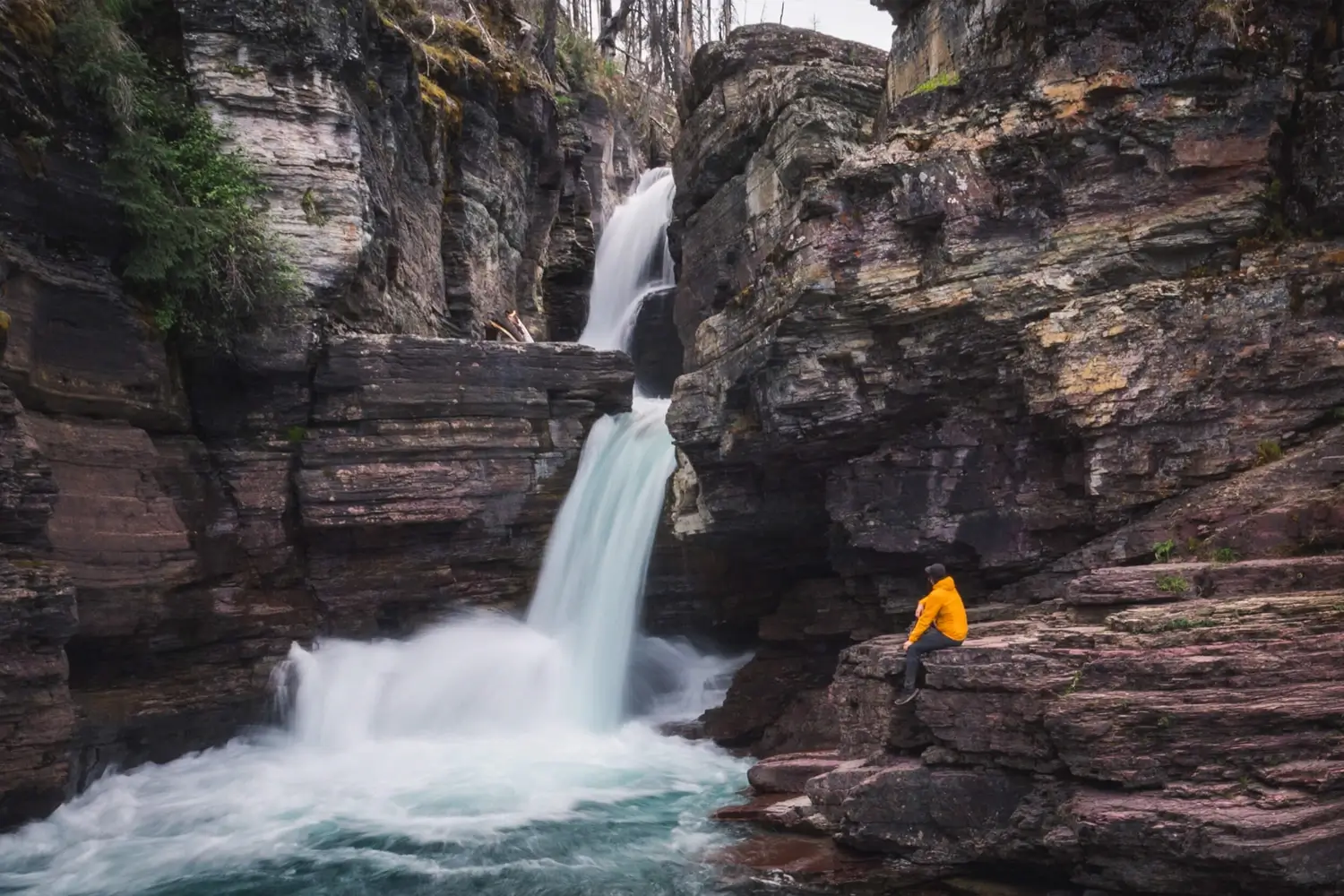
Note: The St Mary Falls hike is located in Glacier National Park, meaning that a valid park pass is required. Only week passes or annual passes are available either online or at the park gates. As a response to congestion on the popular Going-to-the-Sun Road, a separate vehicle registration is required if visiting between 6am and 3pm from May 26 – September 10.
When hiking it’s important to avoid harmful practices such as disturbing plants or rock-stacking. It is illegal to remove any natural object you find in Glacier National Park, from flowers to rocks, as it’s important to leave the environment as natural as possible for the animals and for fellow hikers to enjoy in perpetuity. If you’re after a souvenir to take home with you, there are several gift shops in and around the park. As many flowers as there are, there are few enough that if we all took one, then there wouldn’t be any left. Take only photos, leave only footprints.
If you haven’t heard of Leave No Trace principles, they’re also really essential to read up on before heading anywhere into the outdoors in general. Following these important principles basically means doing your best to leave beautiful places like St Mary Falls as good (if not better) than you found them, both for their preservation and for the enjoyment of other visitors.
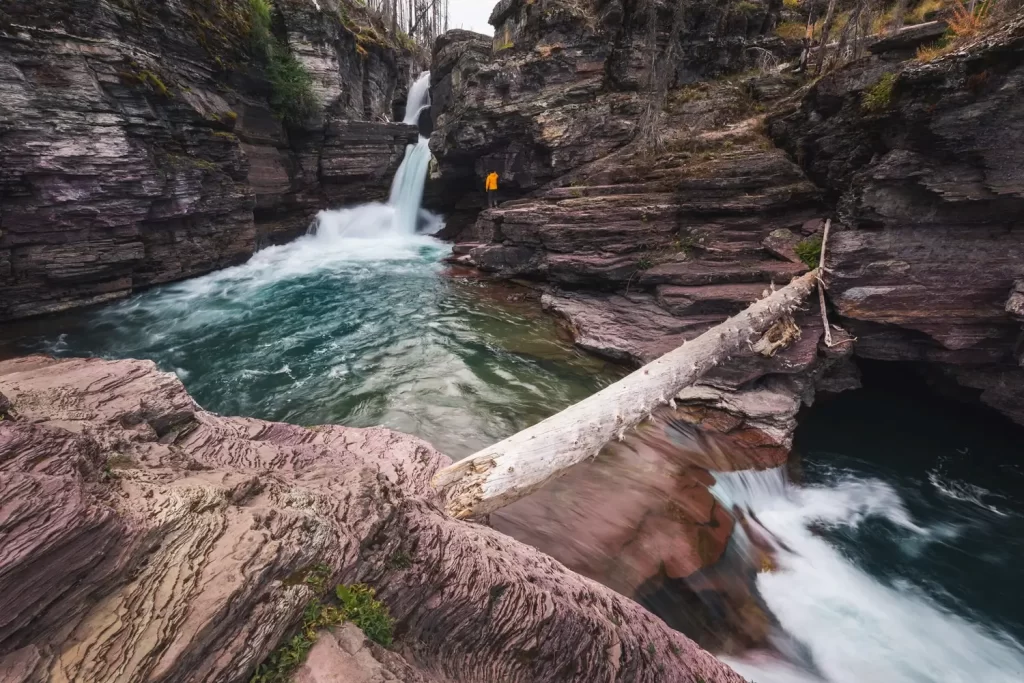
St Mary Falls Round Trip Details
Distance: 2.2 MI / 3.5 KM
Elevation Gain: 236 FT / 72 M
Hiking Time: 1 HR
Hiking & Safety Tips
- Prepare for the possibility of wildlife encounters. Bear spray is a must whenever travelling in bear country, as well as learning how to use it. Though your chance of an aggressive bear encounter is low, it is always better to be prepared with bear spray. Bear bells are proven to be an ineffective bear deterrent, and are actively discouraged by Parks Canada. The best way to let bears know you’re around is simply to use your voice. Make sure to keep a respectful distance from wildlife and never feed the animals. It may seem kind but it doesn’t just kill wildlife and put people in danger, it’s also illegal.
- Research current trail conditions and make sure you are well-informed about the route before you leave, and assess if it is within your capability. Be aware of what time it gets dark and check the weather forecast. Make sure to tell someone where you’re going and when you expect to return. Every year as more and more people try hiking for the first time, the number of rescues goes up. Being prepared is the best defense.
- Pack everything you need for a successful hike, including enough water and energy-rich snacks. Remember to pack out everything you pack in though – don’t expect to find a convenient garbage can halfway up the trail. Bring appropriate layers (remember you’ll warm up once you start hiking) and sun protection. Hiking poles may be helpful but are not required. In addition to not leaving any garbage on the trail yourself, I highly recommend bringing a garbage bag and collecting any trash that you do see on the trail. You’re guaranteed to make the hike to St Mary Falls a more enjoyable experience for the next person.
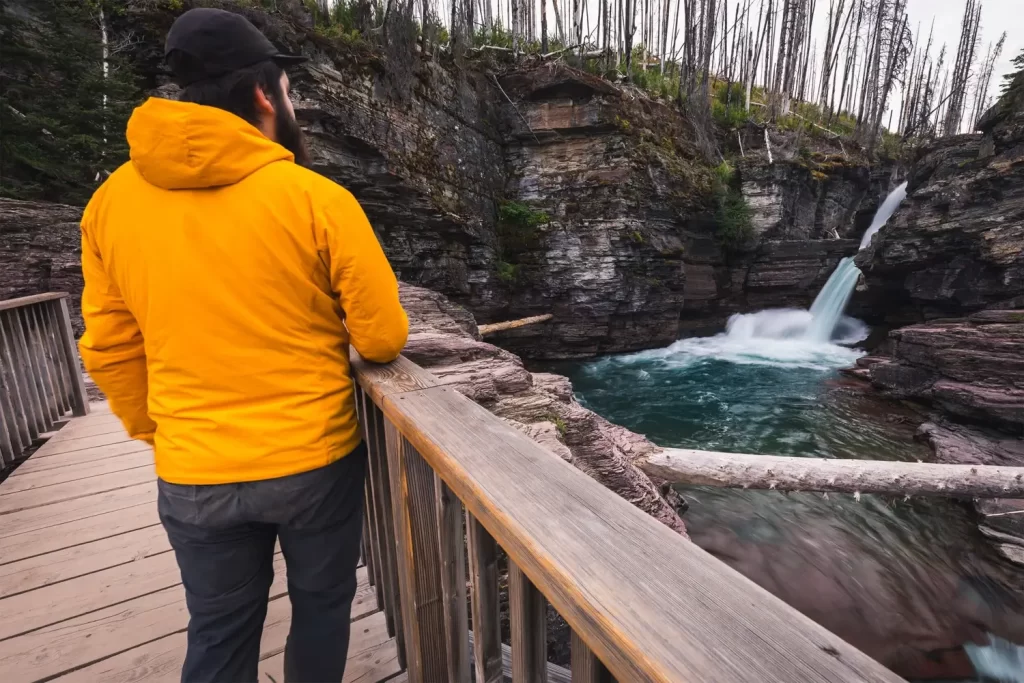
When to Visit St Mary Falls
Like many waterfalls in the Rockies, the best time of year to visit is in late Spring. Melting snow and recent rainfall mean that the water level is at its highest, and the waterfalls at their most dramatic. Later in the year waterfalls lose a lot of their power. I visited St Mary Falls in early autumn and it still seemed to be flowing pretty well.
Because of the lack of shade-providing canopy along the way to St Mary Falls, I would avoid hiking the trail in direct sunlight, instead opting for cloudy days or hiking in the morning or evening.
How to Get to St Mary Falls Trailhead
The parking area for St Mary Falls is located 10 miles down Going-to-the-Sun Road from the St Mary Visitor Center, and only a few minutes past the trailhead for equally stunning Baring Falls. I’d advise giving extra time for the drive in, as there are several spectacular lookout points that are hard to resist stopping at as the road makes its way along the length of St Mary Lake. After driving past the first parking area for Baring Falls, look out for the small parking area on the left side of the road with the bathroom – if it’s full there’s another one another minute or two along.
Click here to open the exact trailhead location in Google Maps.
Hiking to St Mary Falls
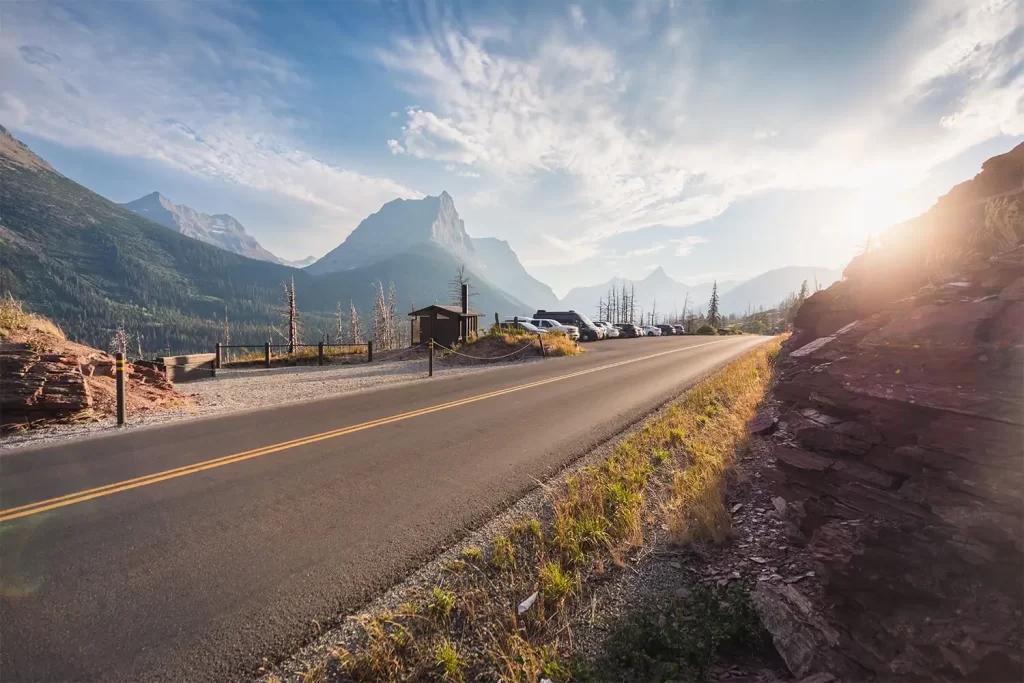
The parking area and washroom located just off of Going-to-the-Sun Road.
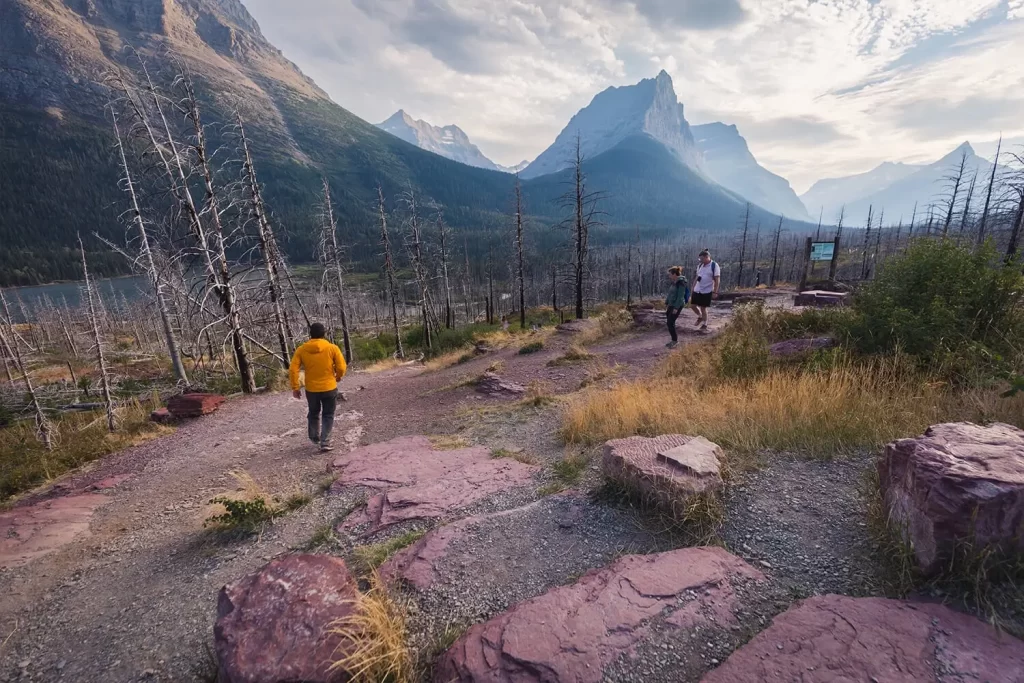
The trail heads downhill immediately. St Mary Lake can be observed at left.
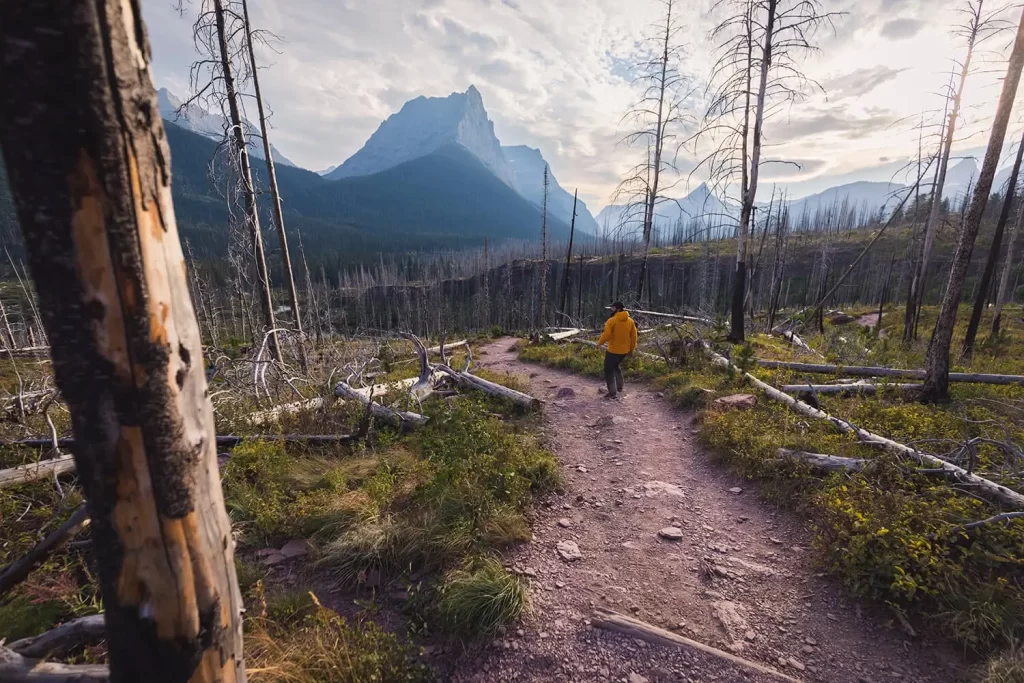
As it continues downhill, the trail keeps to the right. Citadel Mountain looks incredibly impressive in the distance.
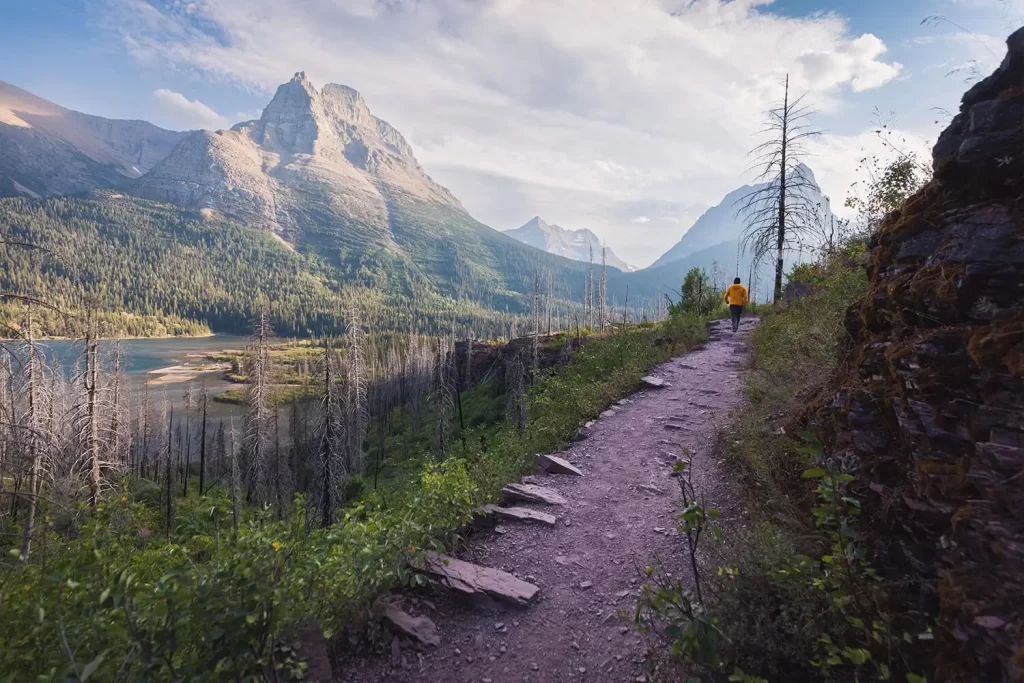
Continuing along with St Mary Lake below. St Mary River can be seen flowing into the lake.
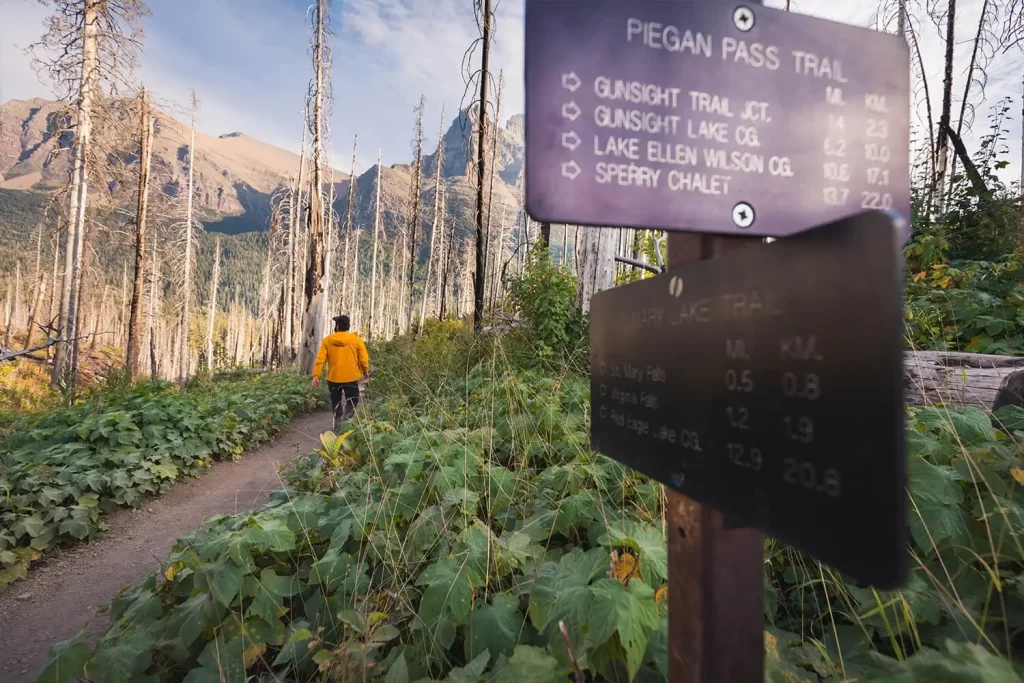
The trail takes a left turn to descend more directly down towards St Mary River.
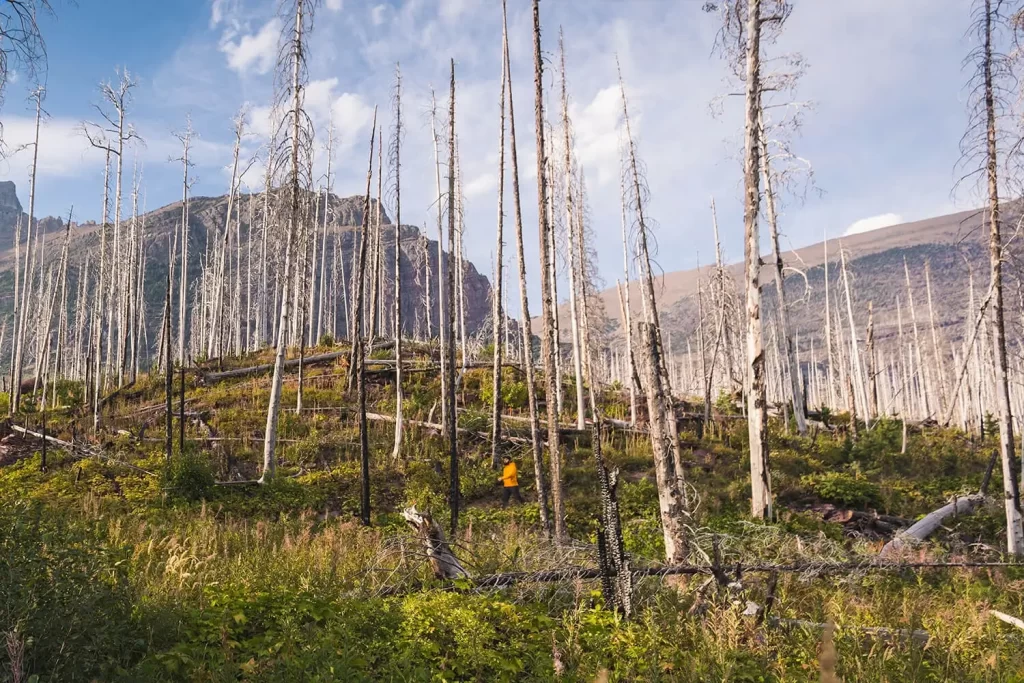
It was a fairly windy day and the whistling of the burnt trees was an unusual sound.
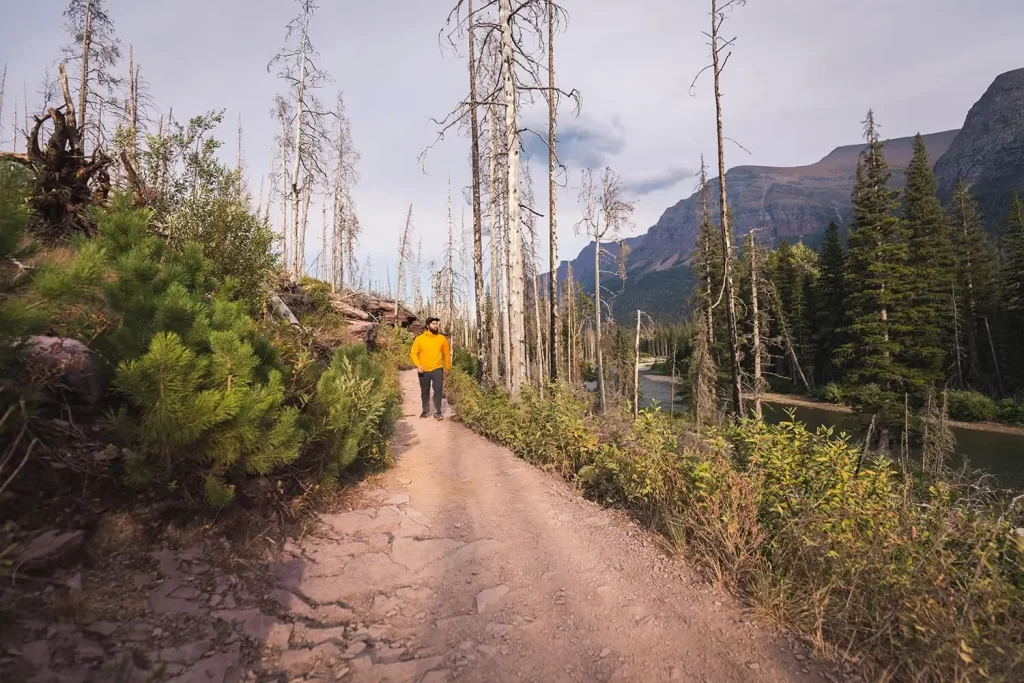
Now at the St Mary River and heading upstream for a few minutes longer.
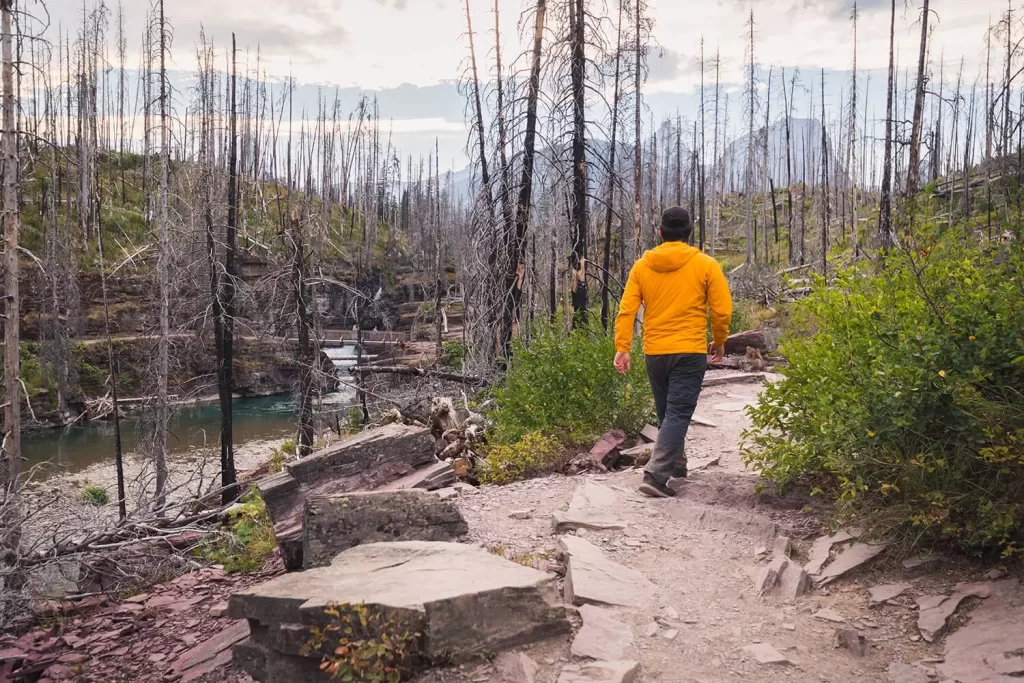
St Mary Falls appearing in the distance.
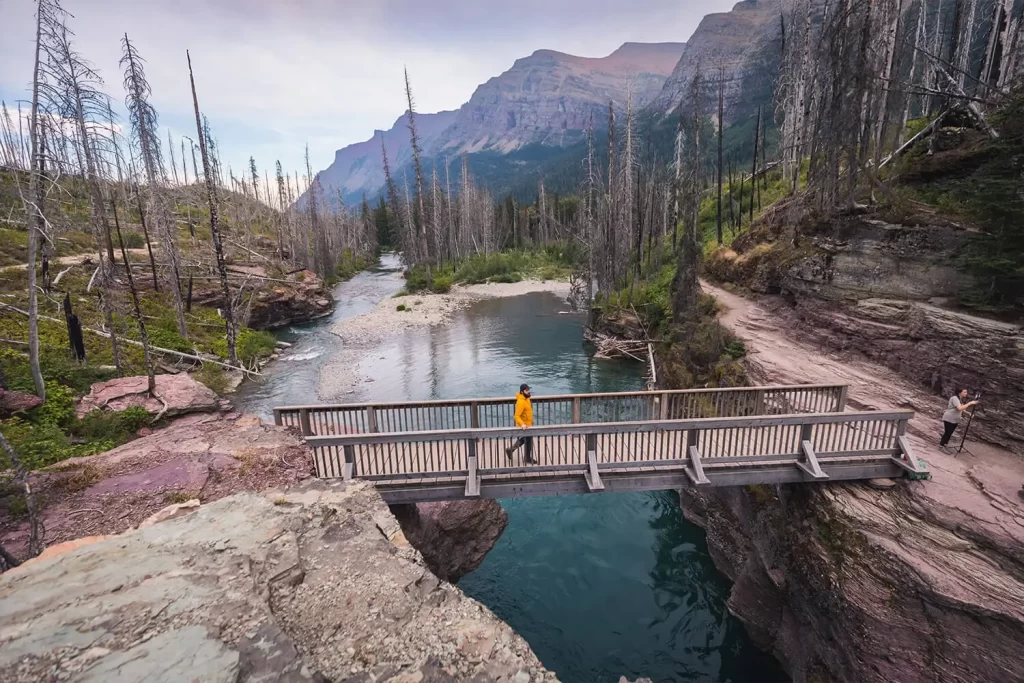
The best views of St Mary Falls are from the bridge right in front of them.
Recommended Hiking Gear



Water is a must whenever I’m hiking, especially if the sun is going to be out. My favourite water filter I’ve used is the Katadyn BeFree 0.6L, which unlike other water filters I’ve used packs up really small and lightweight. For hikes where I know there won’t be any readily available water sources along the way, I make sure to bring my own. The Hydrapak Stow 1L bottle is my go-to, for the same reason that it’s made of a soft plastic that folds up and doesn’t take up any more extra space than necessary in my pack. Finally, Aquatabs are another great option for purifying water, with one tablet being suitable for one litre of water. I previously used the Grayl water filter while travelling internationally, and though I found its hard body more convenient for day to day use and easier to drink from, it has a little too much bulk for my fast-and-light style of hiking.



The secret to all my photos of gorgeous sunset and sunrise mountaintop views? A lot of hiking in the dark. And let me speak from personal experience when I say that the last thing that you want to happen when hiking is to be caught in the dark without a headlamp. I used the Black Diamond Spot 400 for years and it worked great – until I lost it on top of a mountain somewhere. The only downside to it was having to worry about the batteries dying, though there’s also a slightly more expensive version that has a rechargeable battery. Nowadays I’m using the Petzl Actik Core, which is a bit pricier than the more budget-friendly Black Diamond, but is also brighter, more comfortable (in my opinion), and has a hybrid power system that is rechargeable but can also take AAA batteries if needed.
You won’t see me using trekking poles on shorter hikes often – but on long hikes and backpacking trips, as well as certain scrambles, they are an absolute lifesaver. I’ve invested in a high quality ultra-lightweight pair of MSR DynaLock Ascent carbon poles which, while pricey, I don’t regret one bit. If you’re not entirely sure how much use you’re going to get out of a pair of trekking poles, the best budget-friendly option would be the Trekology Trek Z 2.0. Amazon does sell a lot of cheaper Made in China-style trekking poles for cheaper, but these usually are much much heavier and not worth buying.
All the best and most long-lasting cables and power banks I’ve ever owned have been Anker. I once had a phone cable from them that lasted me over three years of daily use! That’s why I keep an Anker PowerCore Essential 20K power bank on me. Like many people I use my phone for a lot of stuff when hiking (checking in with family, using online maps, taking photos, flying my drone) so I like to be prepared for that low battery warning by having a backup power source on me just in case.



The only socks I ever buy for myself are from Darn Tough, and I almost always make sure to wear them when hiking. After years of having no problems only wearing these comfortable and rugged socks for hikes, I accidentally wore a pair of no-name socks on a hike last year and ended up with blisters on both feet. Safe to say I’m back to sticking with the Darn Tough. And the best part? They have a lifetime guarantee, meaning that if they ever wear out you can send them back for a brand new pair. For hiking footwear I go between a pair of lightweight approach shoes for quick and dirty mountain ascents or anything involving scrambling and more heavy-duty boots for longer treks. I’ve worn a couple different versions of the lightweight but super durable Arc’teryx Konseal FL 2 approach shoes for a few years now and am very impressed with the durability. I also really like the thick toecap that keeps me protected every time I stumble into a root or large rock. For longer, tougher, or muddier treks I rely on my LOWA Camino EVO GTX, which I find insanely comfortable and made of very high quality.



I wear my Ar’teryx Gamma Lightweight Pants on every single hike I go on, and on many days when I’m not hiking. After several years of abuse they are still holding together extraordinarily well, with only a few small holes from where I’ve fallen down and some slight stains from being repeatedly coated with mud. They’re lightweight, breathable, and super comfortable. For lightweight and breathable hiking tops I’m a big fan of both the Patagonia Capilene Shirt and the MEC Core Shirt. My Arc’teryx Squamish Hoody shows up in a lot of my photos. It’s super lightweight and packable, and does a great job of cutting the wind while also being pretty breathable. I also have an Arc’teryx Atom Hoody and Arc’teryx Beta LT that I pull out for cooler or wetter conditions.
I hope you enjoyed this guide to hiking to St Mary Falls in Glacier National Park! Feel free to leave any questions in the comment section below or to contact me directly via social media.

Thanks for the great overview of this hike! I’m wondering if you have any recommendations for the best time to find parking at the St. Mary Falls Trailhead if we can’t get there early in the morning?
Thanks in advance!